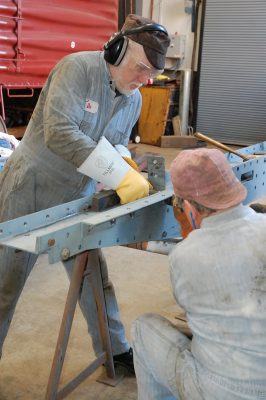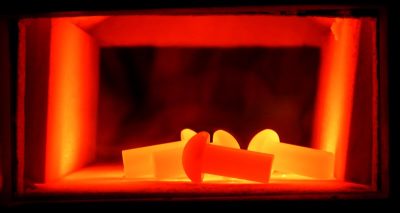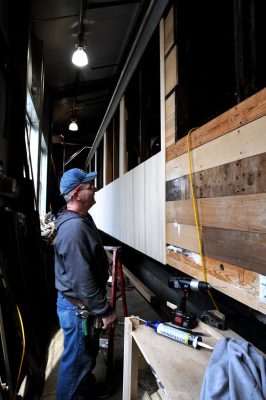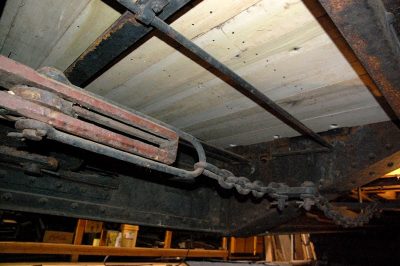Coach 218 has been an occasional focus of the Northwest Railway Museum Blog, and this post represents another update. It also represents our first-ever video post (a panorama shot of coach 218), so let us know what you think.
 Work began in earnest in 2007 and has been progressing at a steady rate. To recap the history, the coach was built in 1912 by the Barney and Smith Car Company of Dayton, Ohio. It features composite wood and steel construction, a precursor to all steel construction that became the standard in 1913. So this coach 218 and its sibling coach 213 were among the very last cars to feature wood in their carbody structures. Coach 218 was retired from passenger service over 60 years ago. It continued to serve the railway as an outfit car for track repair crews and retired from that second life in the 1980s. The rehabilitation work now underway will return the coach to passenger service, only this time at a museum.
Work began in earnest in 2007 and has been progressing at a steady rate. To recap the history, the coach was built in 1912 by the Barney and Smith Car Company of Dayton, Ohio. It features composite wood and steel construction, a precursor to all steel construction that became the standard in 1913. So this coach 218 and its sibling coach 213 were among the very last cars to feature wood in their carbody structures. Coach 218 was retired from passenger service over 60 years ago. It continued to serve the railway as an outfit car for track repair crews and retired from that second life in the 1980s. The rehabilitation work now underway will return the coach to passenger service, only this time at a museum.
Earlier this month, a team of volunteers tried their hands at riveting. Lead by retired boilermaker John H., the crew consisting of Dave J., Russ S., Roger S., and Bill H. assembled the platform beam for one end of the coach. Using a propane-heated rivet oven, they heated rivets until they were red hot (approximately 1,500 degrees), picked them up with rivet tongs, inserted them into the predrilled hole, placed a bucking bar on the factory head, and then applied the pneumatic rivet gun to the buck shaft that protruded through the other side. A handful of blows from the rivet gun produced uniformly round head and a tight connection. Similar techniques were used in the construction of the car, although much of the riveting was probably performed with machines that used steam or pneumatic pressure to squeeze the rivet into the hole to form a neat, round head on the end of the buck shaft.
Similar techniques were used in the construction of the car, although much of the riveting was probably performed with machines that used steam or pneumatic pressure to squeeze the rivet into the hole to form a neat, round head on the end of the buck shaft.
 Other continuing progress includes application of the siding/cladding, now nearing completion. Bob M. has volunteering an average of one day per week and has been leading the installation effort. To install a single board that is less than two inches wide involves a series of tasks. It must be cut to length, placed onto the tongue of the adjacent board and forced tightly against it and then nailed in five to nine placed, depending on board length. To minimize damage to the boards, the holes to accept the cut nails are predrilled, and to minimize areas where rain can infiltrate, a bead of latex caulking rated for 50 years is being applied to the tongues before the next board is installed.
Other continuing progress includes application of the siding/cladding, now nearing completion. Bob M. has volunteering an average of one day per week and has been leading the installation effort. To install a single board that is less than two inches wide involves a series of tasks. It must be cut to length, placed onto the tongue of the adjacent board and forced tightly against it and then nailed in five to nine placed, depending on board length. To minimize damage to the boards, the holes to accept the cut nails are predrilled, and to minimize areas where rain can infiltrate, a bead of latex caulking rated for 50 years is being applied to the tongues before the next board is installed.
 Also measuring progress is the floor deadening, the name given to the insulation under the car floor. Horse hair was the dominant insulation but had trapped moisture causing widespread issues. Much of the 1912 deadening was badly deteriorated and/or contaminated with mold. New boards were milled by a team consisting of Russ S., Bob M., and Chuck M. Manufacture and installation took place on Wednesdays and Thursdays over a period of five months and was substantially completed this week – congratulations to the crew!
Also measuring progress is the floor deadening, the name given to the insulation under the car floor. Horse hair was the dominant insulation but had trapped moisture causing widespread issues. Much of the 1912 deadening was badly deteriorated and/or contaminated with mold. New boards were milled by a team consisting of Russ S., Bob M., and Chuck M. Manufacture and installation took place on Wednesdays and Thursdays over a period of five months and was substantially completed this week – congratulations to the crew!
Next steps for coach 218 include installation of the subfloor, completion of the “B” end platform, manufacture of new steps, application of the canvas roof, completion of siding installation and installation of window stops.

